Western Brook Pond In Newfoundland
Gros Morne National Park in Newfoundland, Canada, is well known for its fjords. Western Brook Pond is one such fjord that was carved by glaciers and is now shouldered by forests and cliffs. Because it is landlocked, the long, narrow body of water is referred to as a pond or fjord lake.
For a few days, Bob and I were staying in the small community of Rocky Harbour on the western coast of Newfoundland. On the particular day of our visit to Western Brook Pond, we were roused from our sleep at 5:45 a.m. by members of a bus tour who were getting an early start to the day.
All was quiet in Rocky Harbour at that hour. Thankfully, the wind had finally dropped to a light breeze, but it was a chilly 7-degrees Celsius when we stepped outdoors.
A short 20-minute drive north along the coast brought us to the parking lot from which we had to hike into Western Brook Pond. When originally carved into the Long Range Mountains, the fjord extended across this area right to the sea.
When the glacier melted, the coastline rebounded like a sponge, rising above sea level and cutting the fjord off from the sea. Now landlocked, it requires a 3-kilometre hike across a wide expanse of bog to the edge of Western Brook Pond.
Under constant foreboding skies, Bob and I set off on a series of boardwalks across the boggy areas and gravel paths laid out in the forested stretches.
Bob and I had lots of time during the 45-minute walk to scan our surroundings for Caribou. When covered with glacial ice, this region was home to many animals used to a subarctic climate. Caribou are among those that still roam the area.
The hike to the boat dock was very easy. Both children and adults covered it quickly.
As we approached Western Brook Pond, its shore was hidden from view by a forest of balsam fir and spruce trees, some misshapen from strong ocean winds that sweep over the flat bog from the Atlantic. Called tuckamore trees, they are an iconic sight in Newfoundland.
We reached the dockside pavilion by 12:20 p.m. and then ate our simple picnic while waiting to set sail at one o’clock. The season and weather determine the number of tours each day.
Hazy sunshine glimmered off the water as tour operators divided passengers between two different launches. Western Brook Pond is 16 kilometres long, and the 2-hour boat ride would provide ample opportunity to appreciate the soaring cliffs.
The captain provided informative commentary, and I was grateful that it took the form of short anecdotes on only a few occasions. He let the beauty of the setting speak for itself.
The chill of the air at that altitude was significant and was compounded by a constant breeze and the forward movement of the boat.
Sunshine gently warmed our backs but it was fleeting. A small waterfalls off to our left poured into Western Brook Pond. It glinted in the stray rays of light as we peered up the steep face of that northern cliff.
Thrown into contrast against the bright sky was a rock formation on an opposing cliff face. Everyone aboard turned to look when the captain drew attention to it.
Known as the Tin Man, the naturally formed pinnacle of this pointed crag appears to be keeping watch over Western Brook Pond as he stares off toward the west.
The Tin Man “wears a substantial coat” that protects him in all weather. Of course, this formation is named after the Tin Man in The Wizard of Oz.
Casting an eye behind us had me feeling discouraged. Dark grey, low-hanging clouds threatened inclement weather.
The brooding sky lent an air of mystique to the fjord. We felt as though we had been whisked away to some far-off shores. The deeper we motored up the fjord, the less light penetrated to the bottom of the chasm.
As the fjord narrowed, a sense of eeriness and intrigue pervaded the atmosphere. What was lurking in that fog-shrouded valley ahead?
Gros Morne National Park is home to several glacially-carved fjords, but Western Brook Pond is the largest of those. A boat tour is definitely one of the best ways to experience the dramatic landscape.
The otherworldly atmosphere created by the sheer mountainsides rising from the water to incredible heights made it difficult to believe we were in Canada.
Western Brook Pond is only 16 kilometres long, and from one end to the other, there is such a quick change in elevation of the surrounding topography that atmospheric conditions can shift unexpectedly.
We experienced scattered raindrops at one point in our ride, but then the sky brightened to reveal lush green forests marching up the lower reaches of the cliffs.
In contrast to the wide, western end of the fjord, that is surrounded by flat, low-lying land, Western Brook Pond is constricted by precipitous cliffs that soar to heights greater than 2,000 feet where the gorge narrows.
Washing over the billion-year-old rocks are numerous waterfalls, each fed by a pond on top of the highland plateau.
Over 20 streams flow down through the valley or cascade into Western Brook Pond. During Newfoundland’s summer months, snow melt from the highland plateau adds to the source of water.
Although Western Brook Pond began as a saltwater fjord, over time, with only fresh water flowing into the pond, it became totally flushed and transitioned into a body of freshwater.
With Western Brook being the only outlet from the fjord, it takes 15 years for the water in Western Brook Pond to totally change over. The fjord is considered to have some of the world’s purest water.
At the end of the fjord, we catch sight of Pissing Mare Falls. At a height of over 1,148 feet, it is one of the highest waterfalls in Eastern North America.
Plunging into Western Brook Pond, the waters of Pissing Mare Falls turn to mist before reaching the bottom of the precipice.
Leading from the bay at the end of the fjord is a v-shaped valley that once held the glacier that shaped the fjord. It is here that hikers are dropped off if they wish to climb to the lookout that provides the world famous view of Western Brook Pond.
The hike is not for the feint of heart nor for those without orienteering skills. The summit is attainable within a few hours, but 4 days of back-country camping and cross-country hiking are then required to make it back to civilization.
Motoring back the length of the fjord provided a different perspective on the scenic grandeur of Western Brook Pond. An ethereal glow emanated from mist-shrouded peaks, and the weather turned in our favour.
As another tour boat slipped past us, Bob and I took note of an old rock slide that we had overlooked earlier.
As the captain navigated the narrow fjord back to the dock, passengers were treated to traditional Newfoundland folk songs and music that got everyone’s toes tapping. The cheerful tunes created a magical moment and sense of joviality as we continued to gaze upon the majestic beauty before us. I even danced a short jig to the sprightly tunes.
By now, “friends” with other travelers, Bob and I appealed to one kindly chap who snapped a photo of the two of us.
The 32-kilometre round trip had us on the dock again by 3 p.m.
Back on the far side of the bog, a scope is provided for visitors so they can scan the landscape for wild animals. We took time for a look before heading to the parking lot.
Bob and I were not successful seeing any of Caribou, but really, it was of no consequence. The experience of sailing the most famous fjord in Newfoundland was enough to thrill us. Classified as one of the most beautiful bodies of water in North America and the number one tourist attraction in Gros Morne National Park, Western Brook Pond lived up to its reputation.
Frame To Frame – Bob and Jean

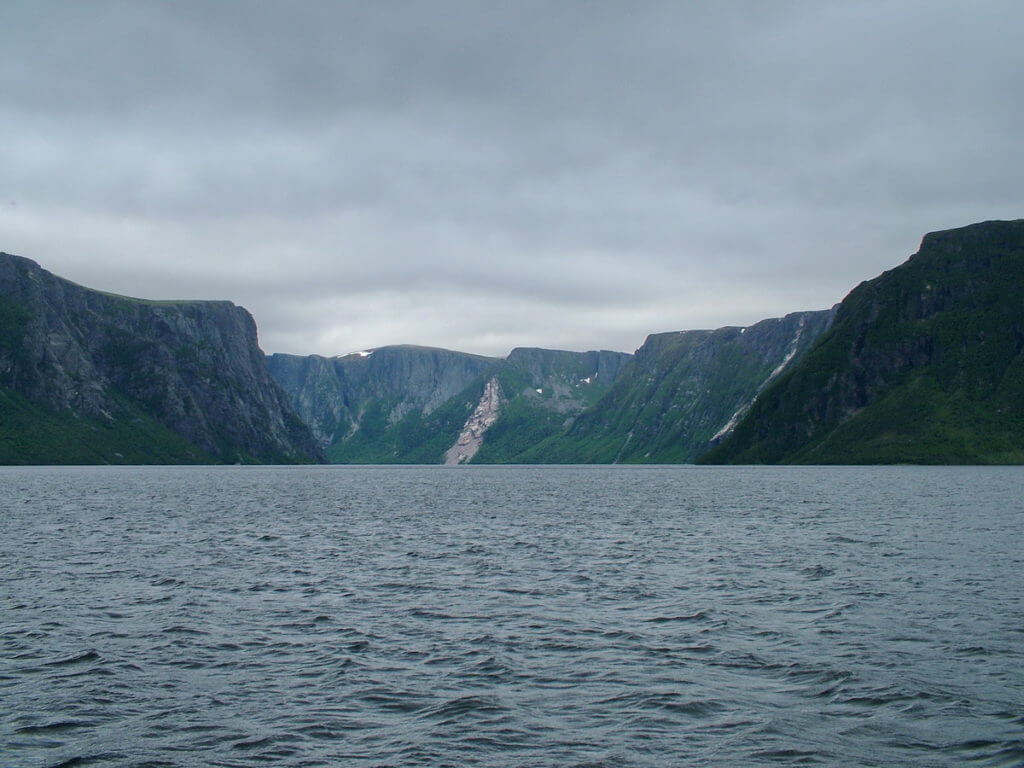


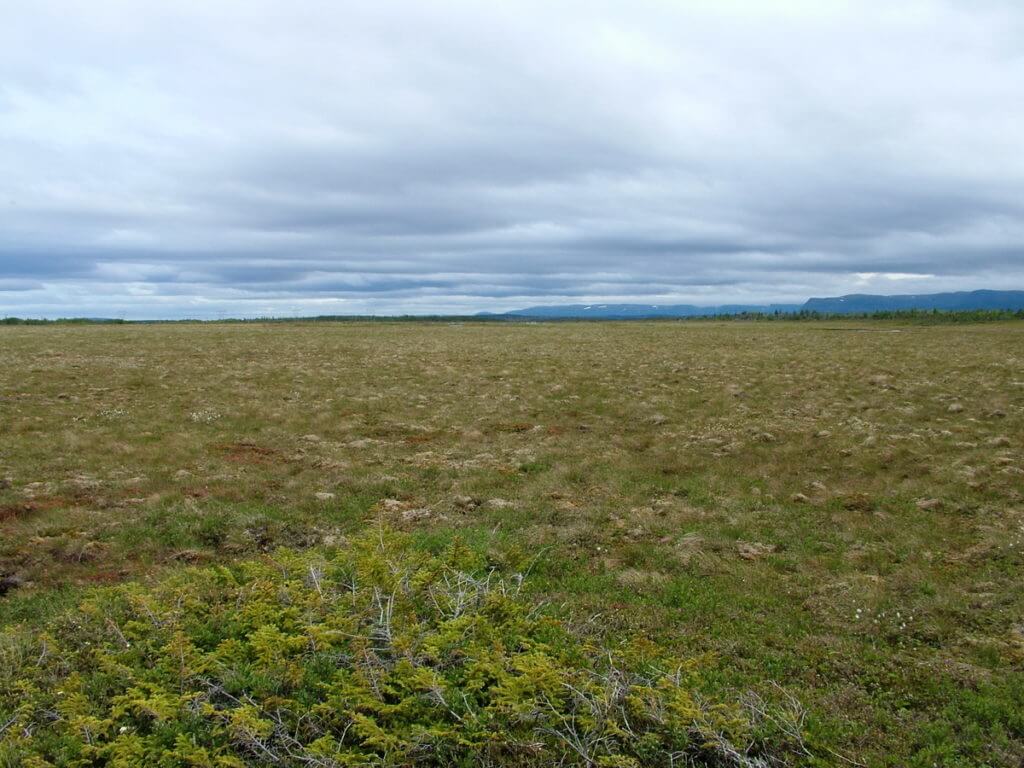

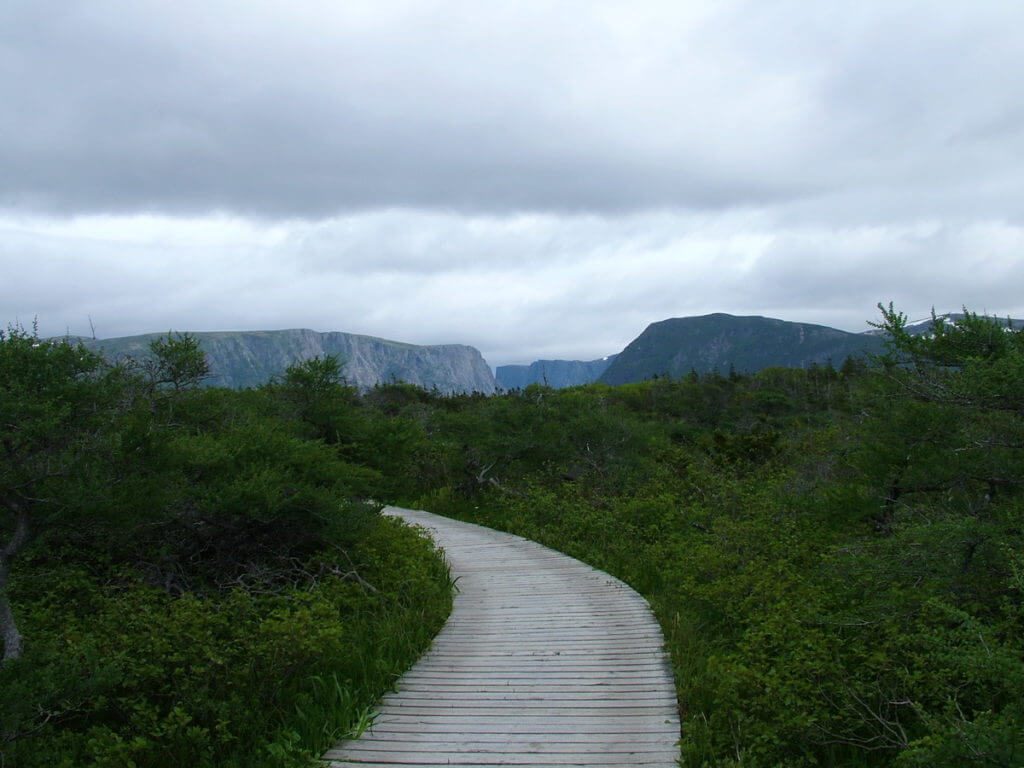
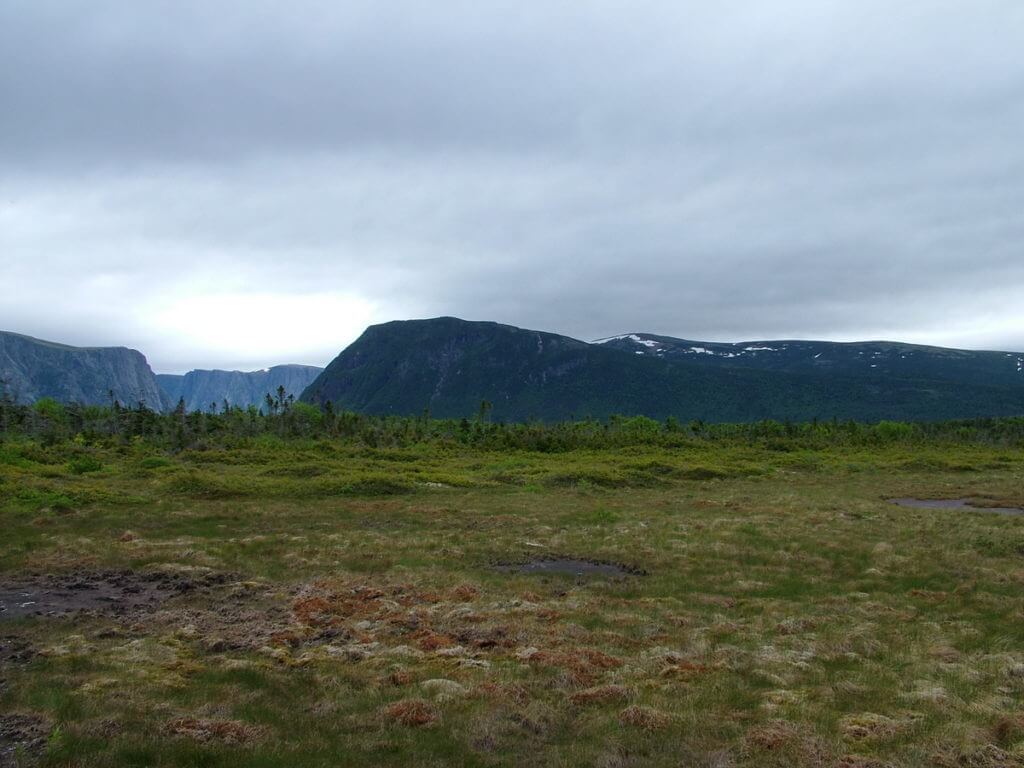
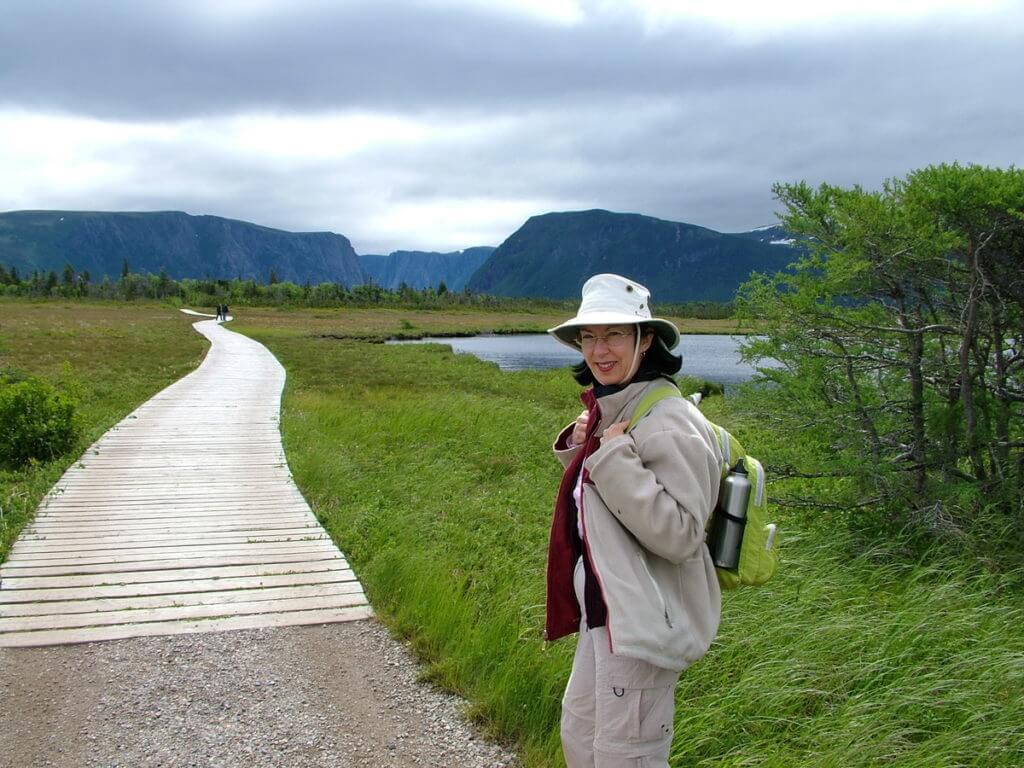
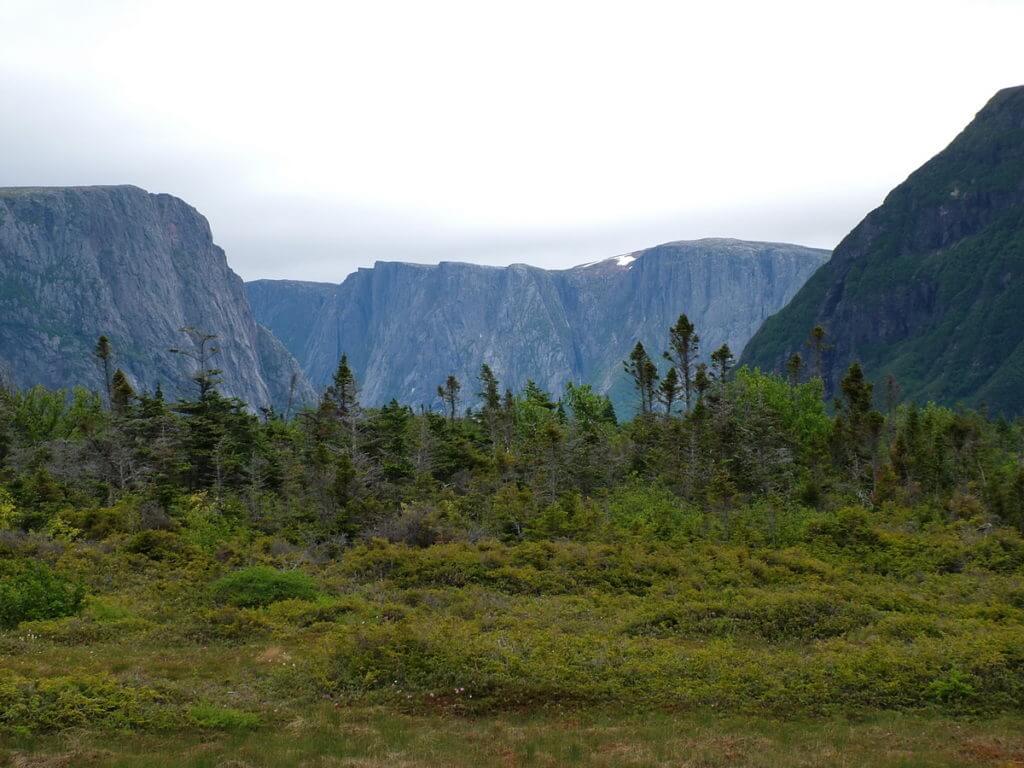
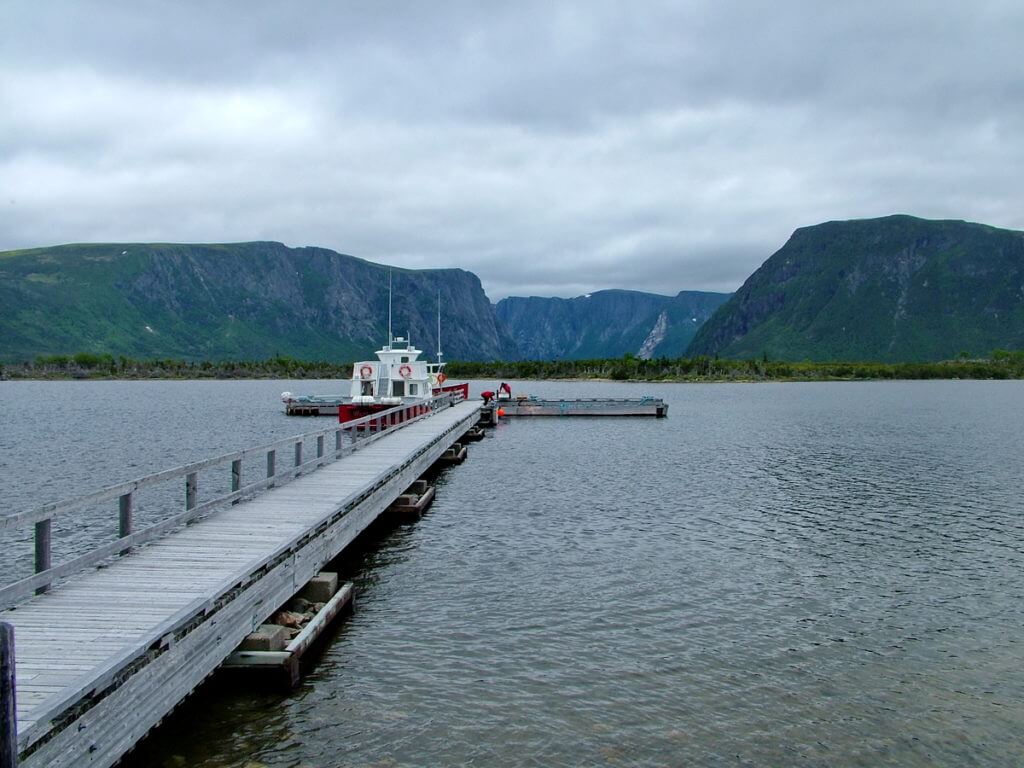
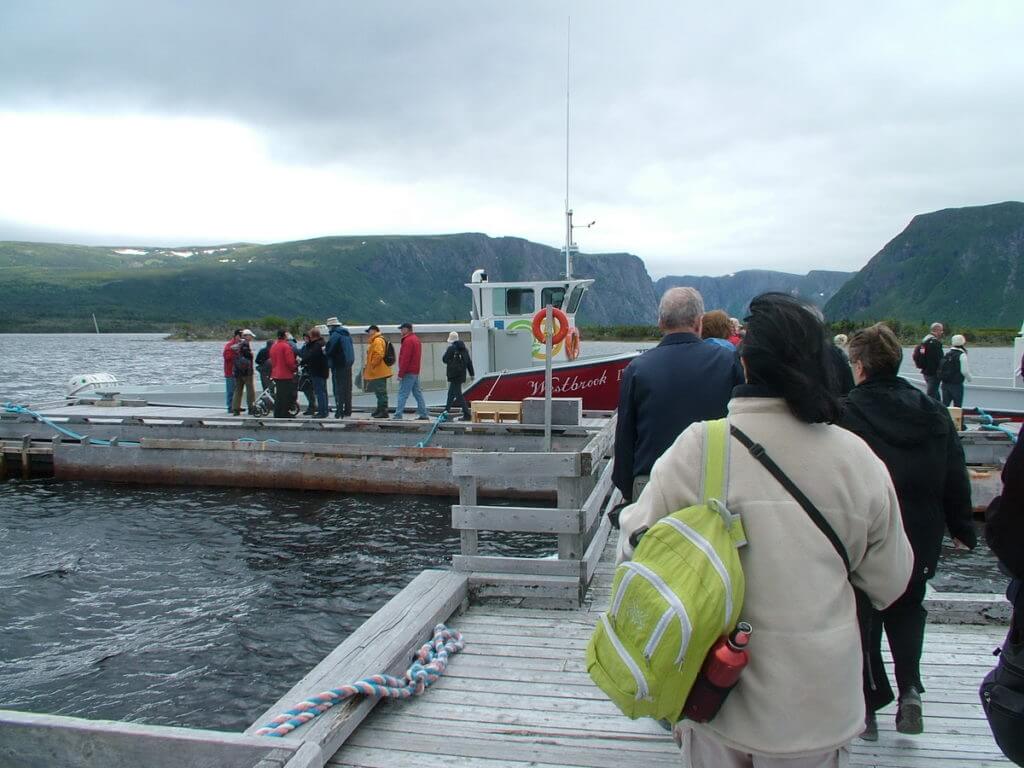
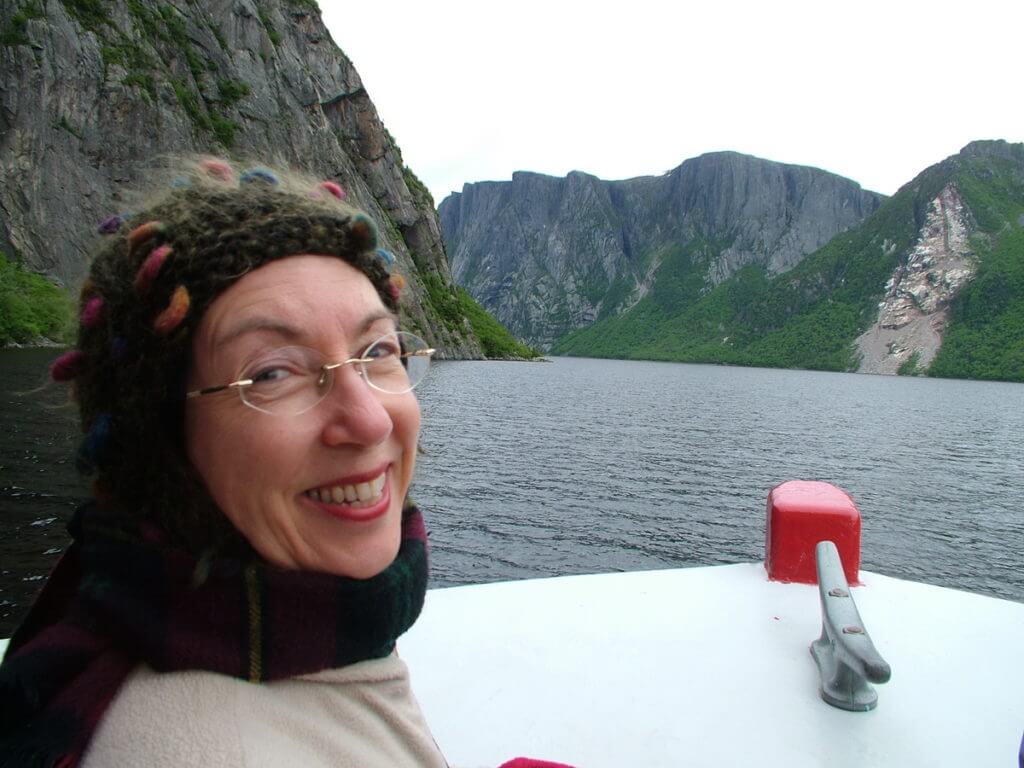
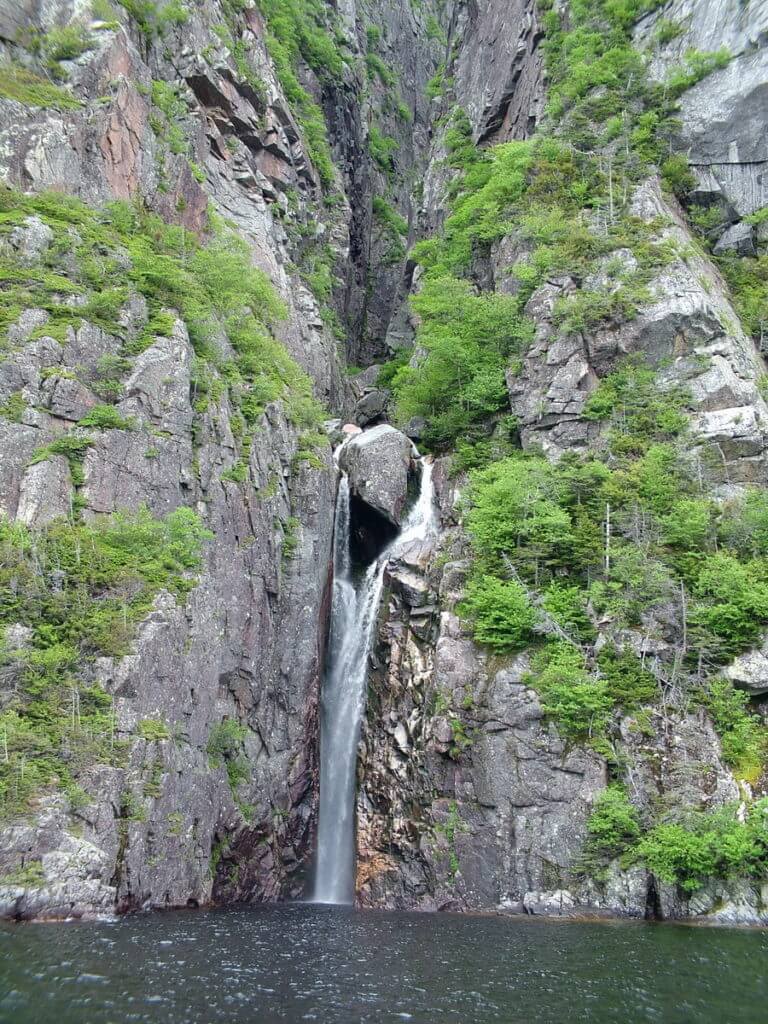
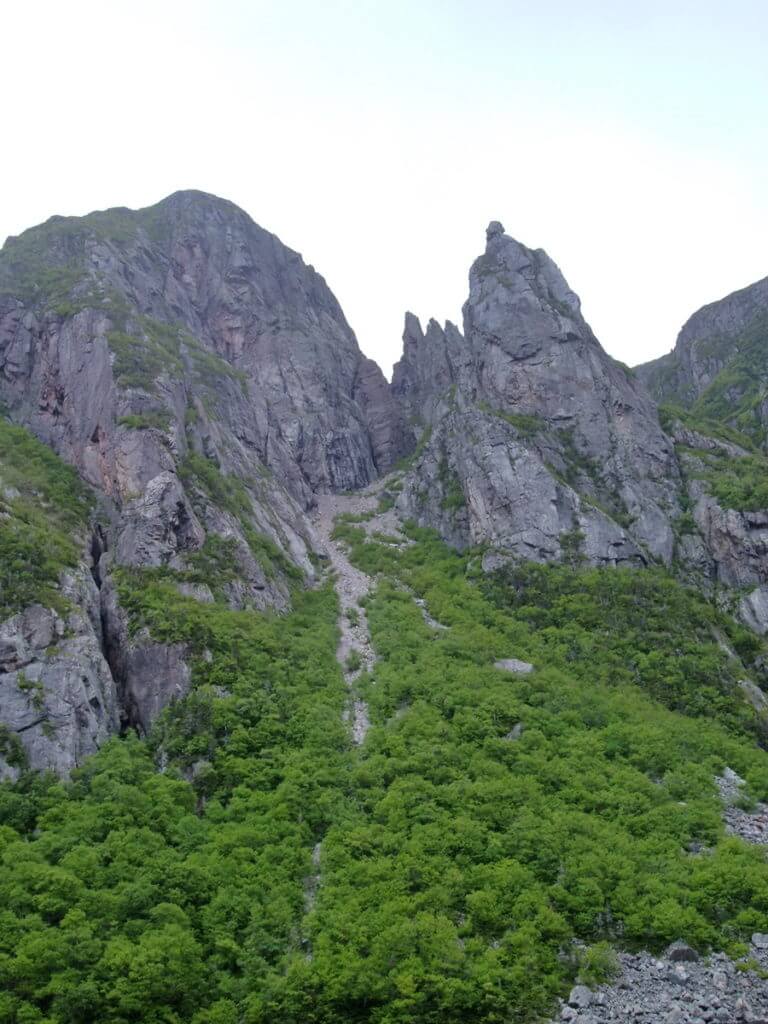
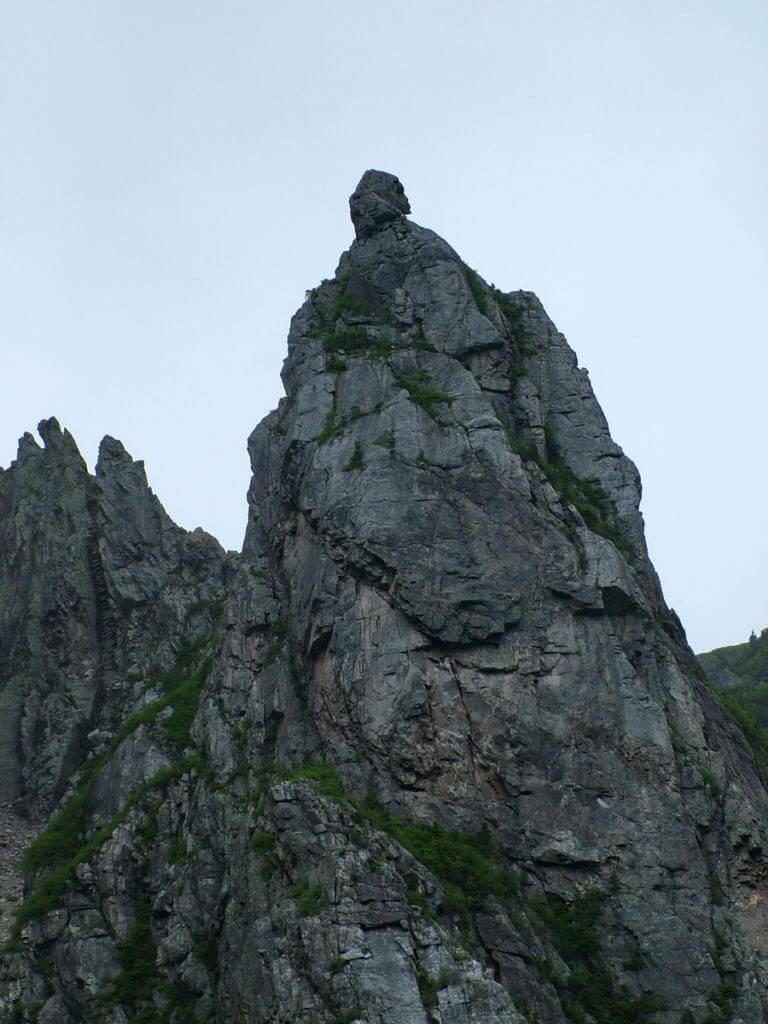
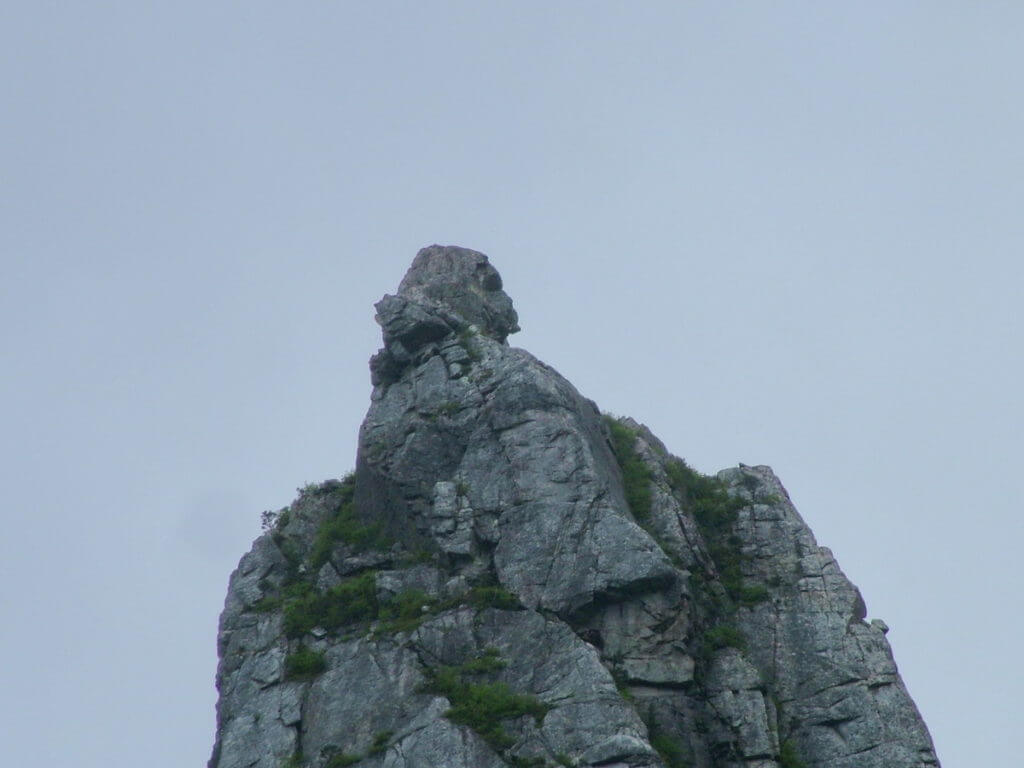
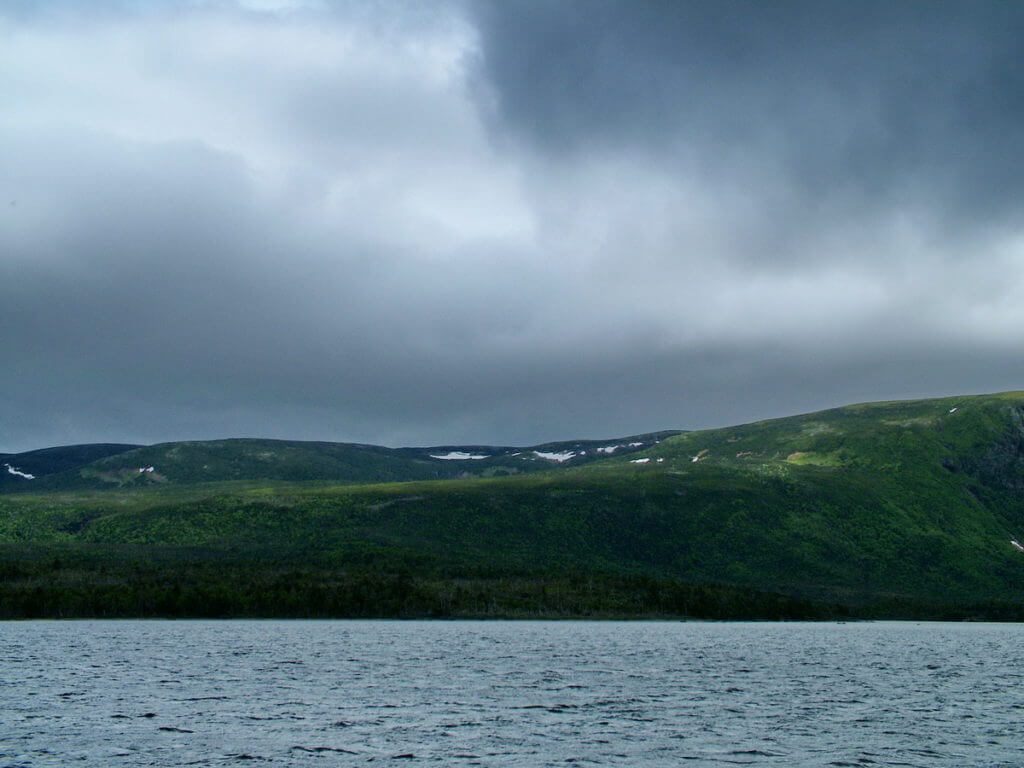
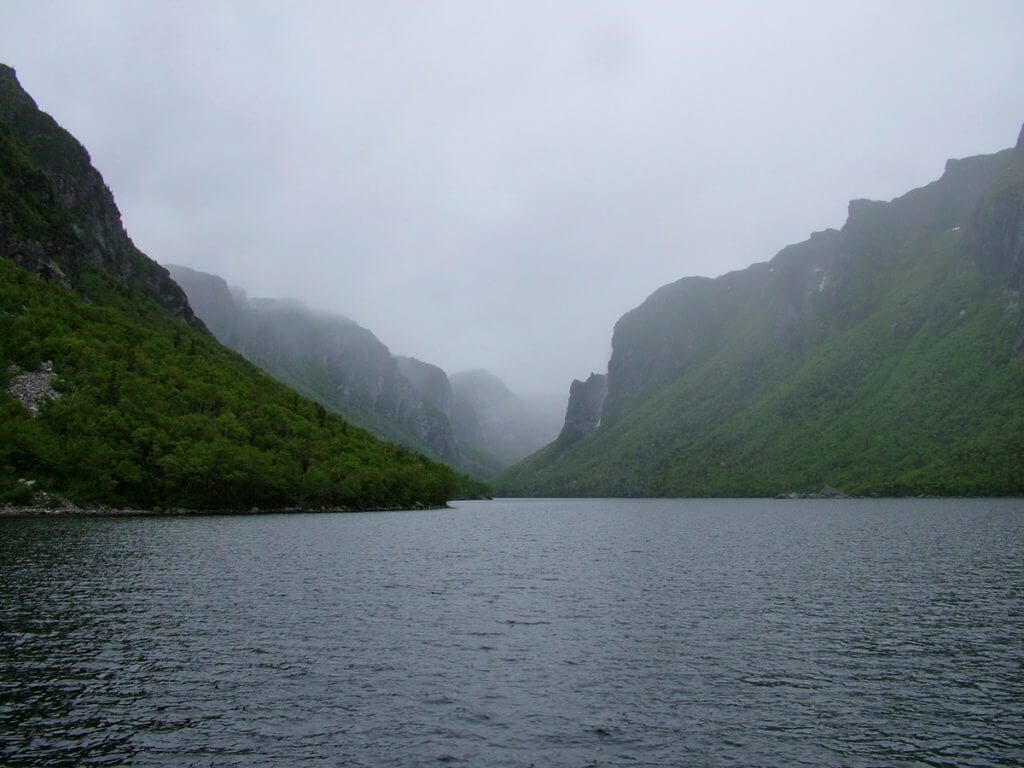
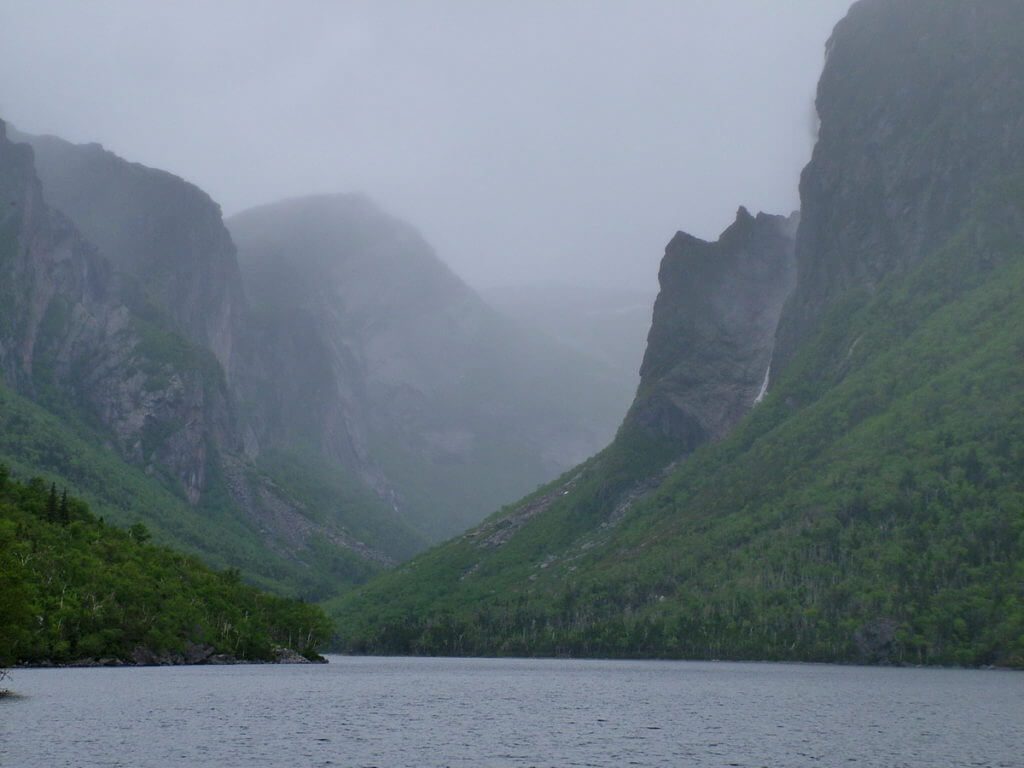
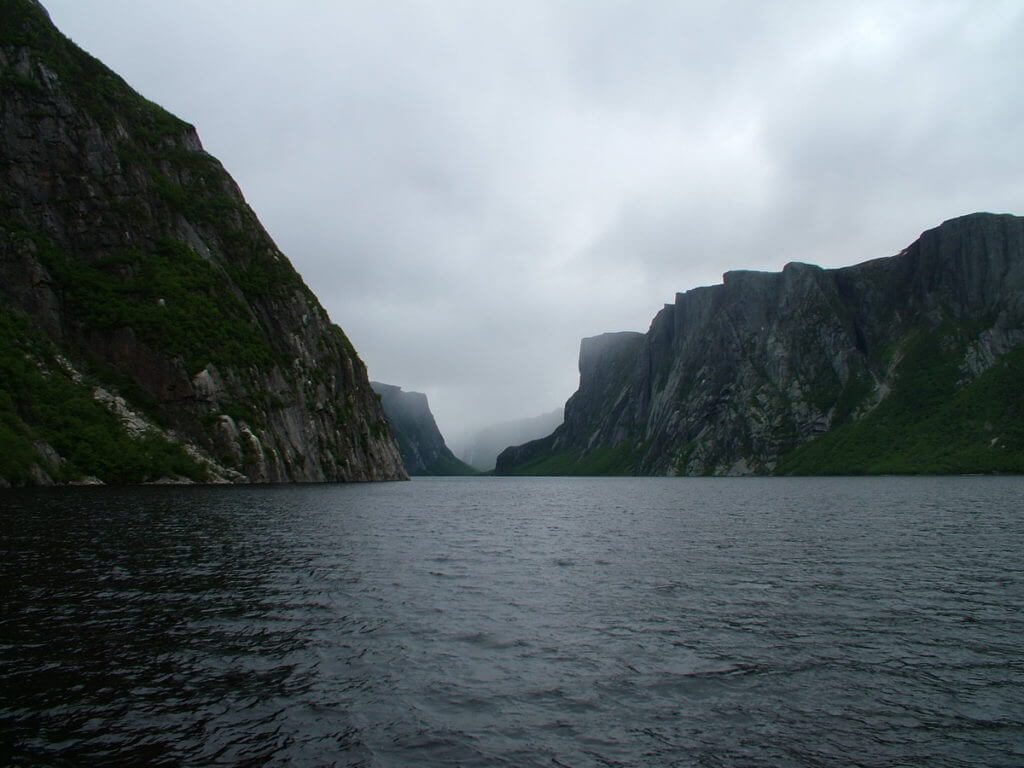

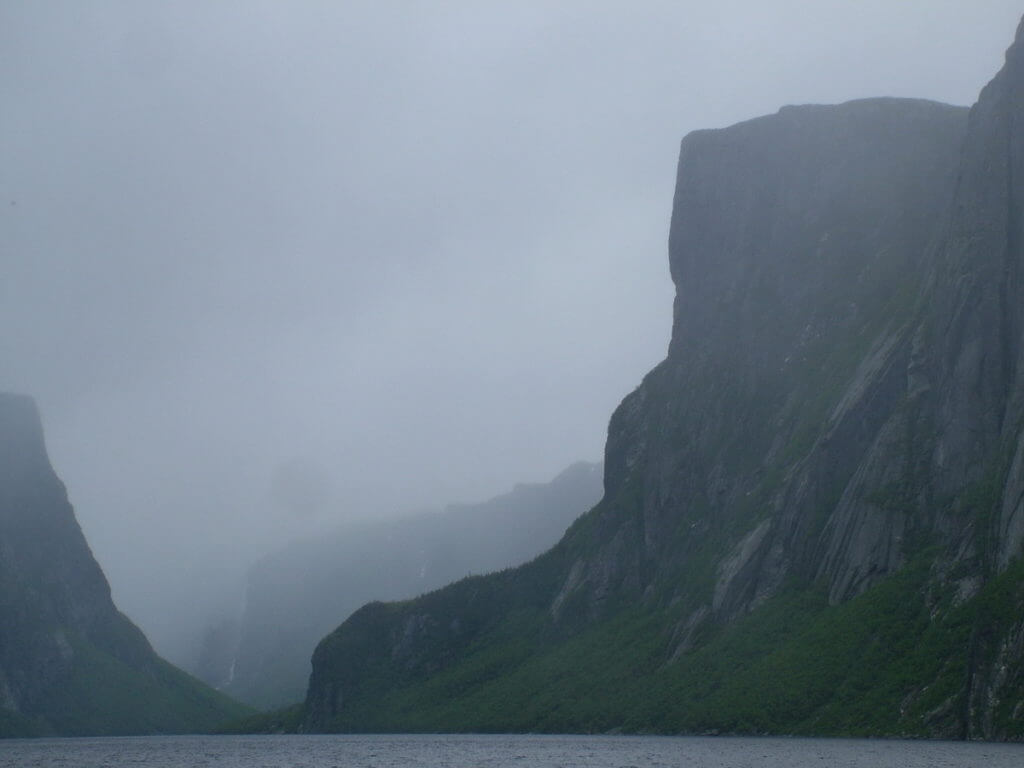
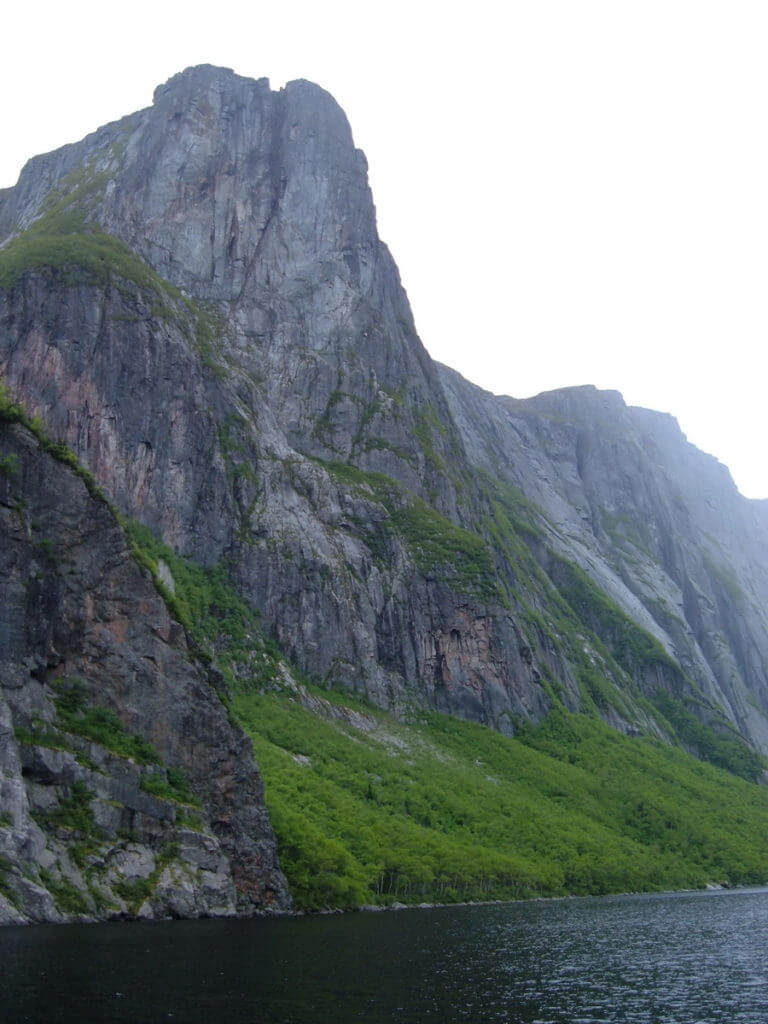

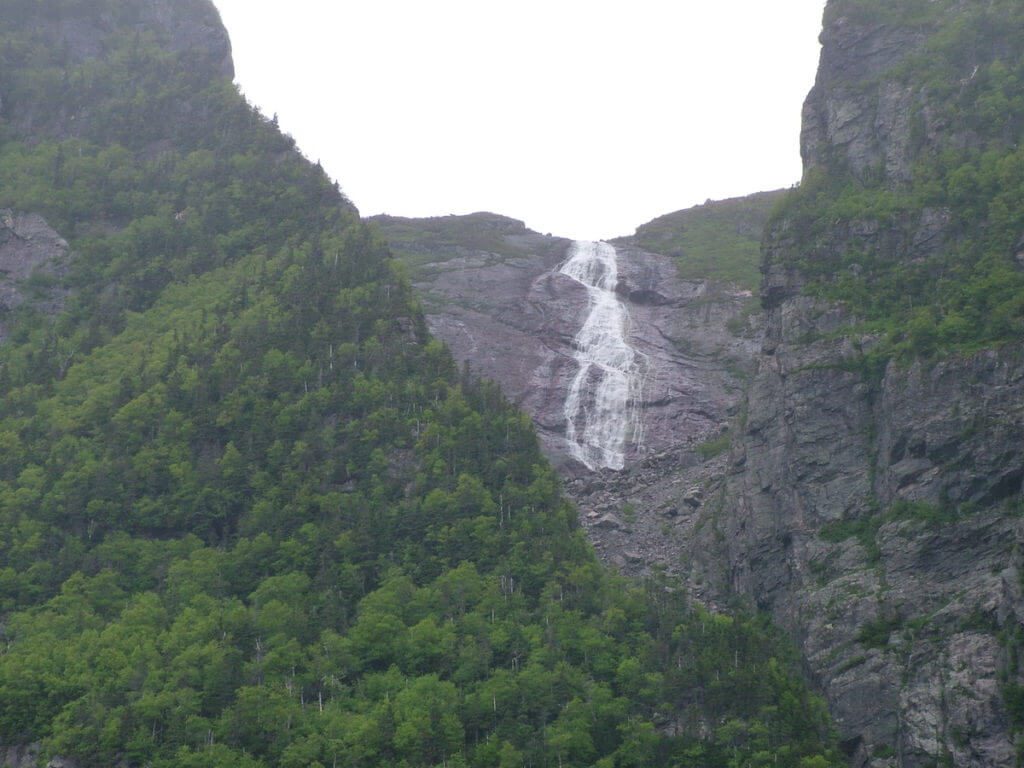
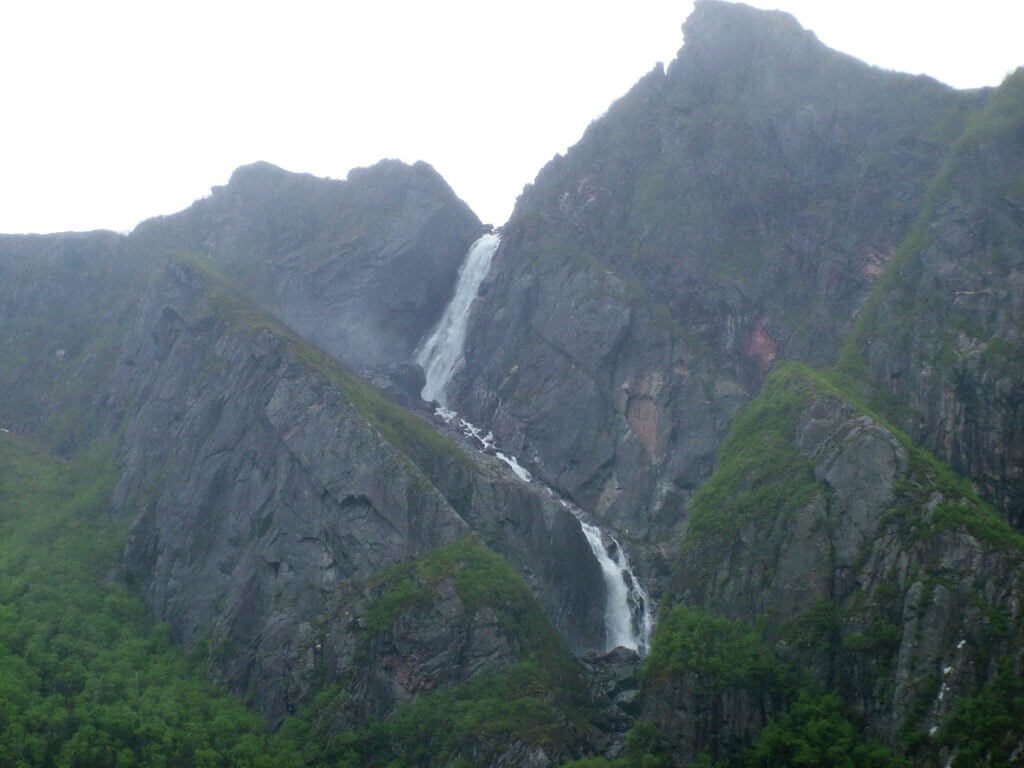
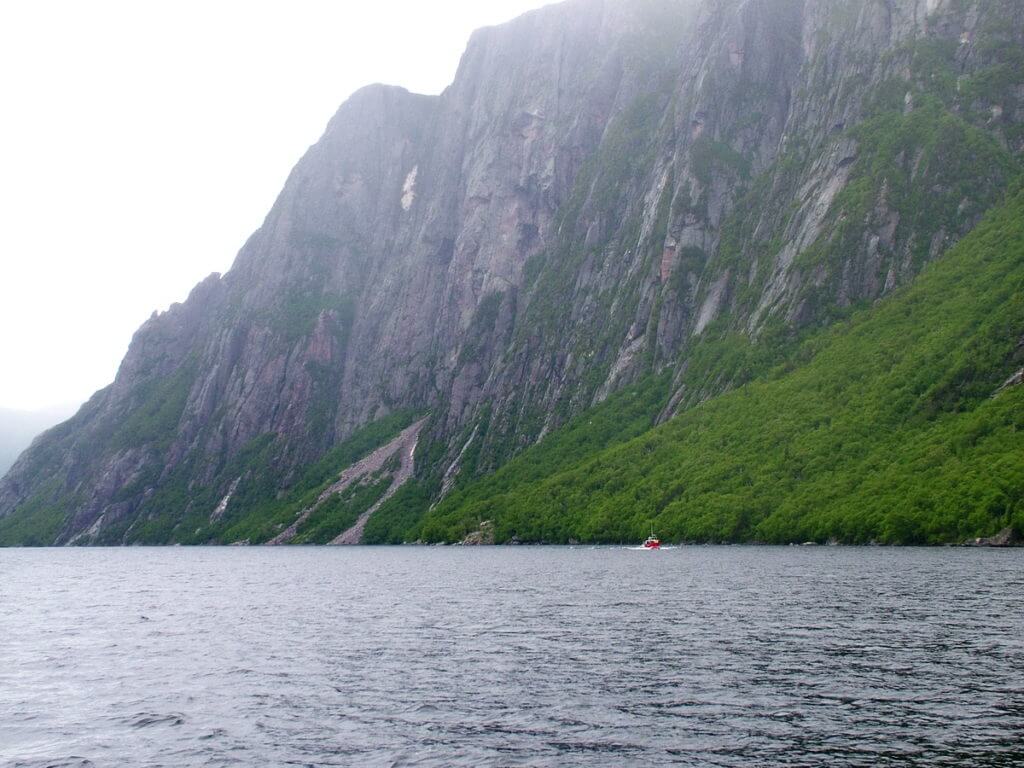

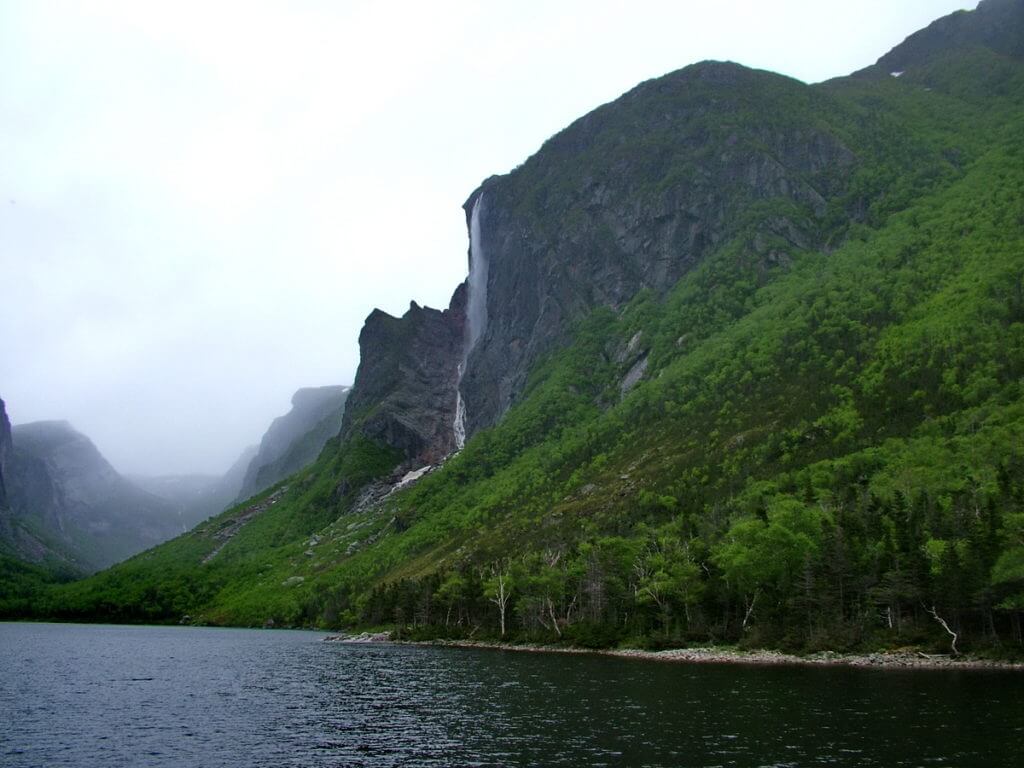
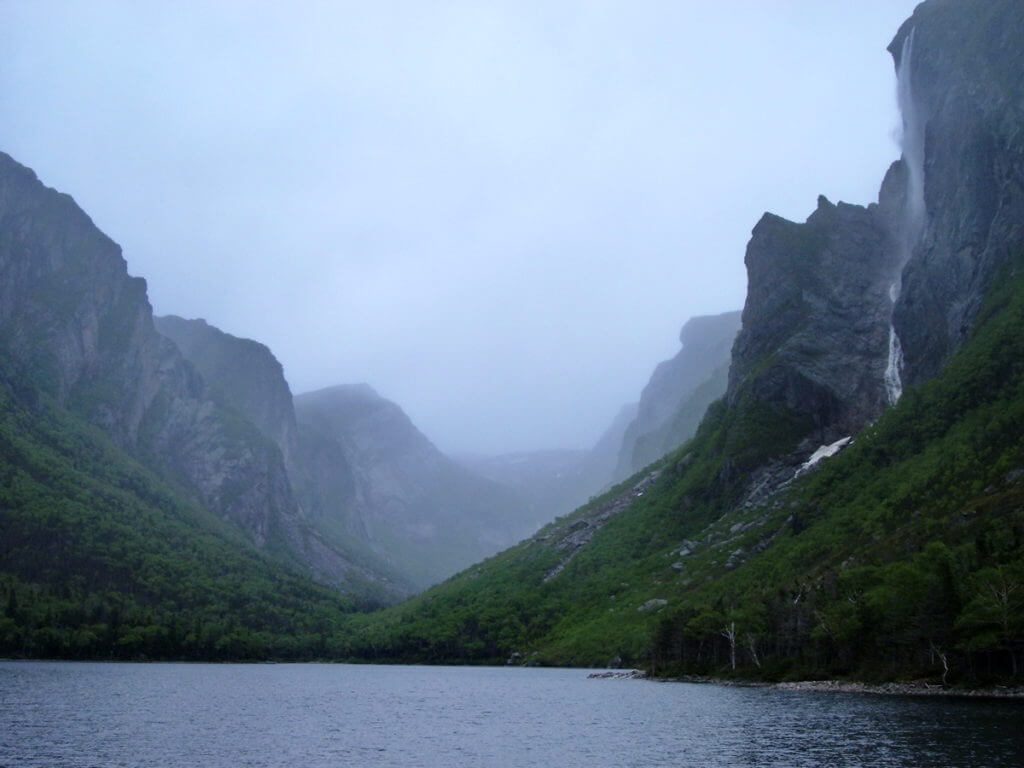
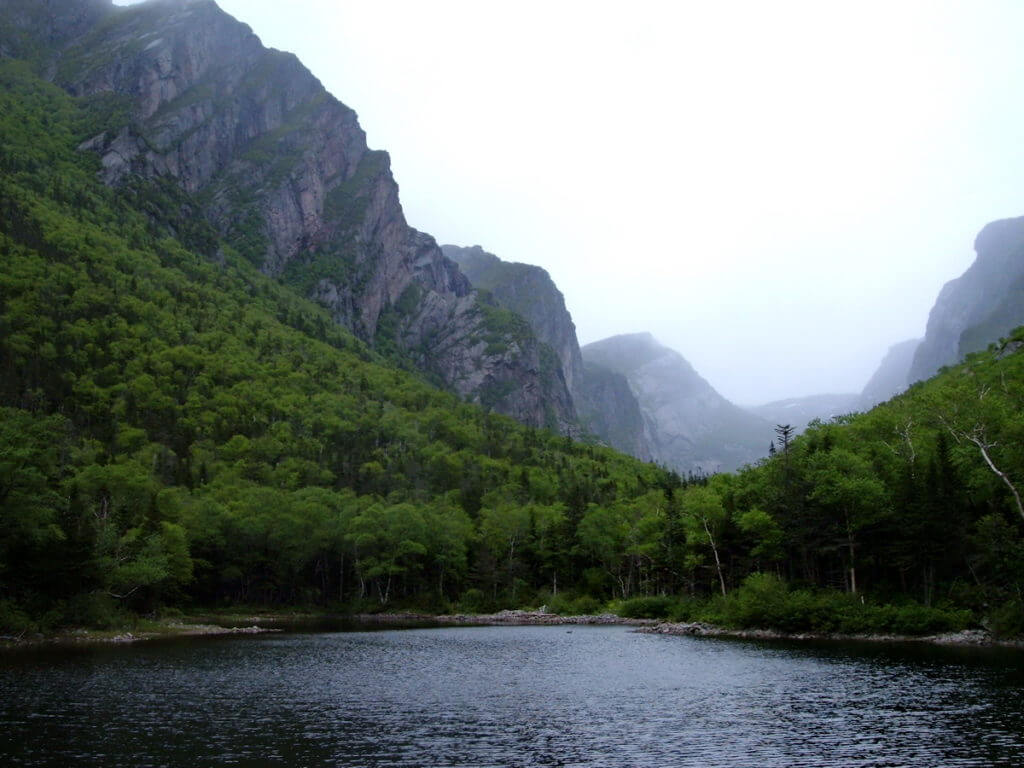

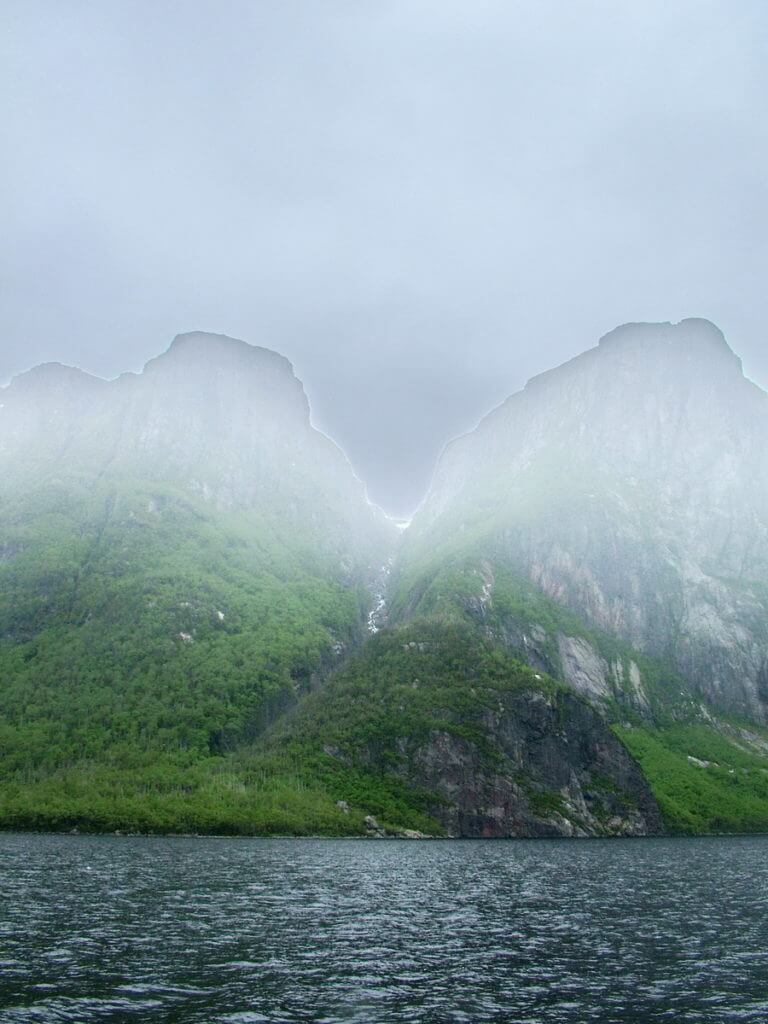
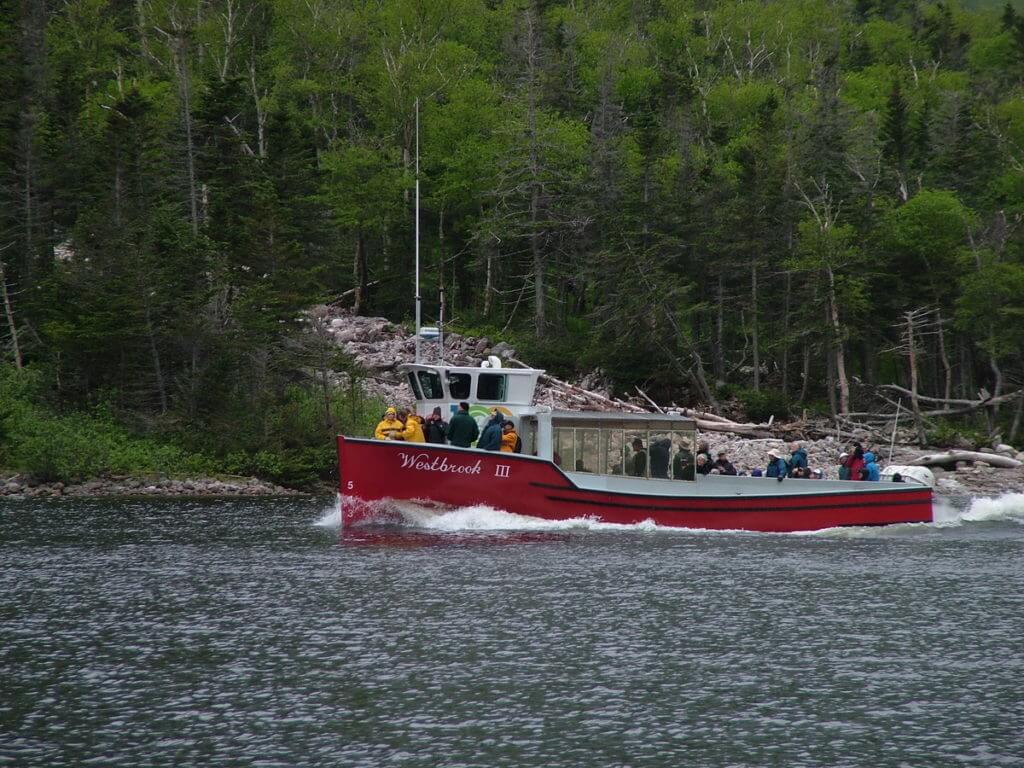
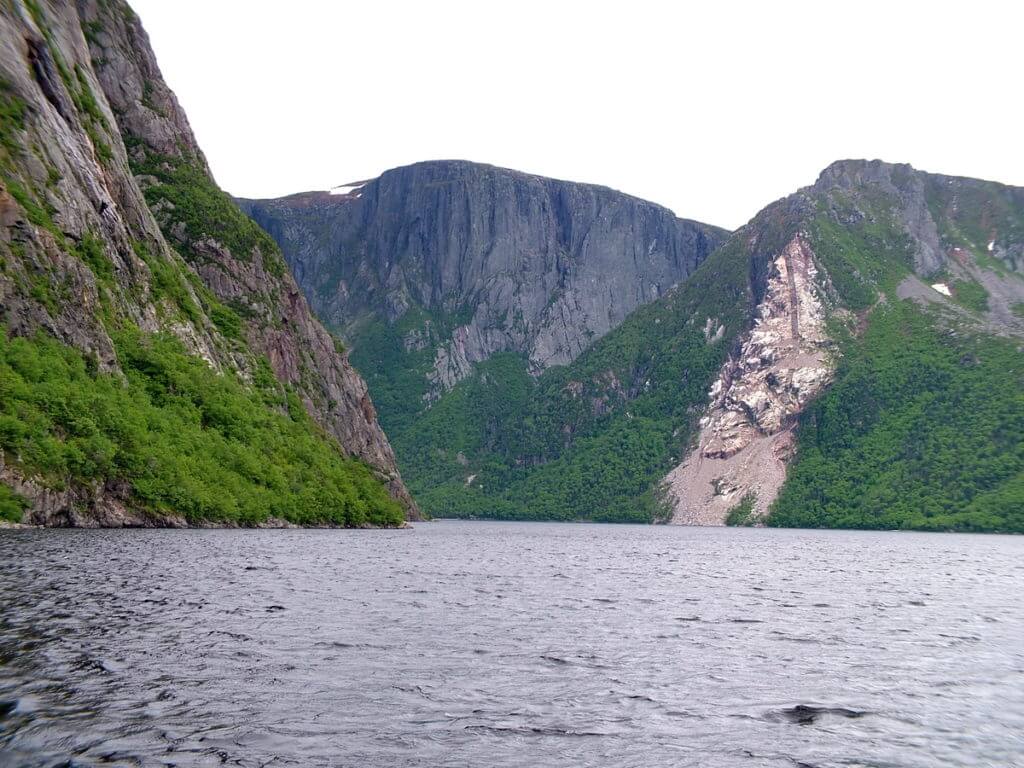

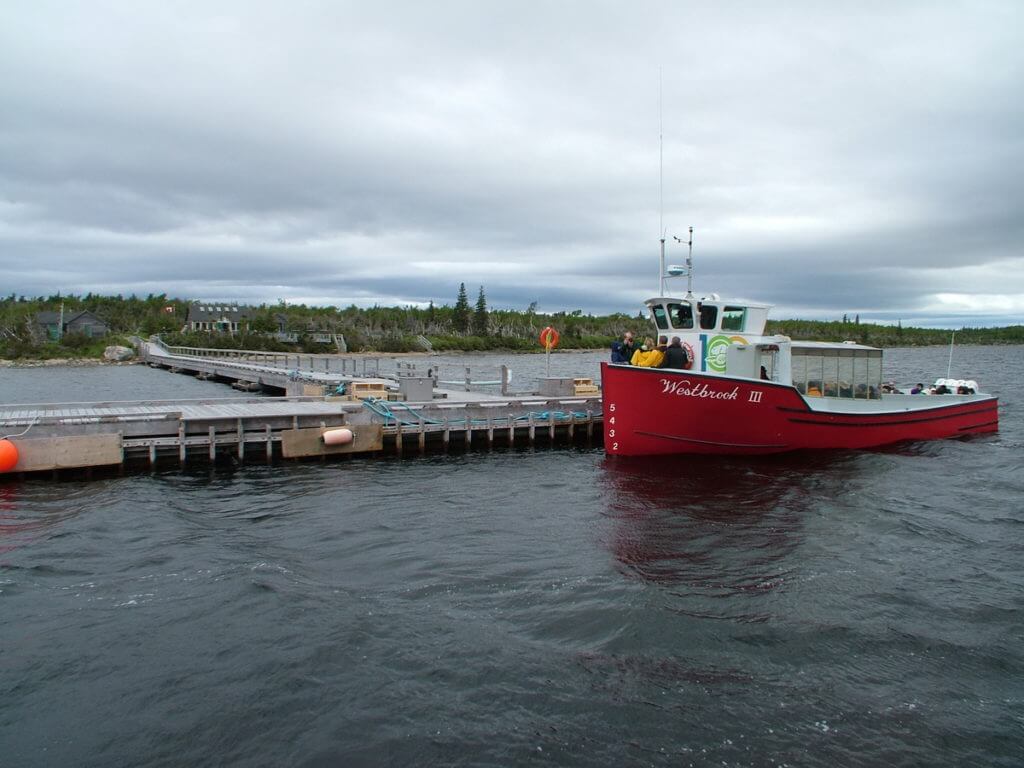
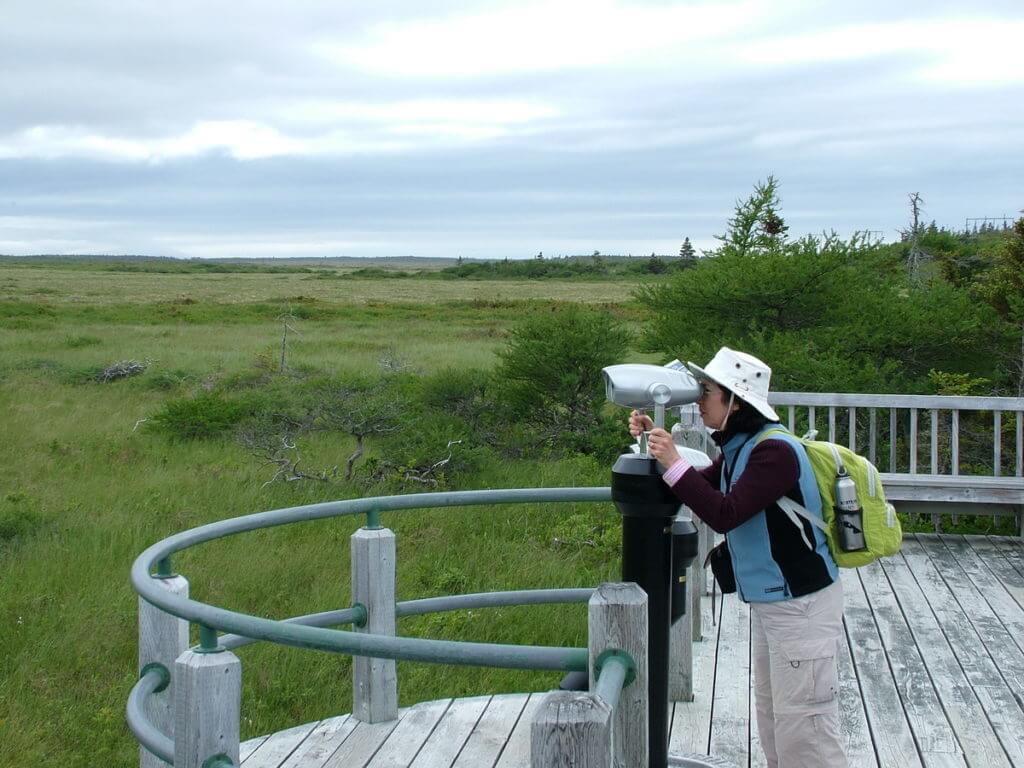
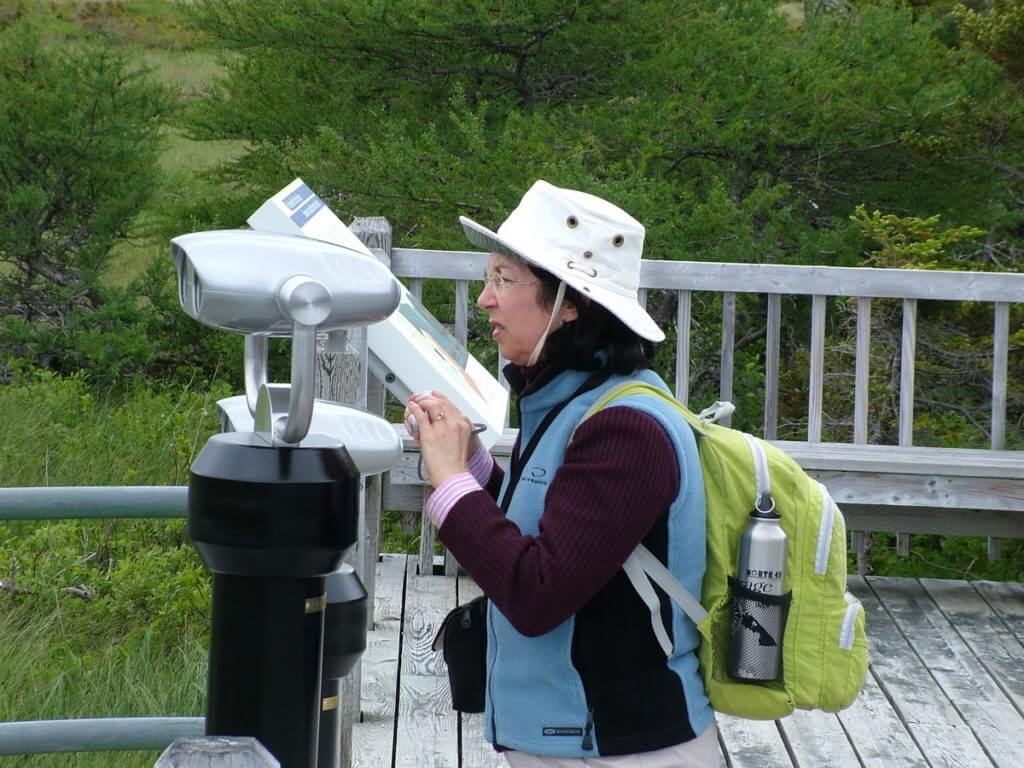
Hello, love your documented travels. I’m a local of Gros Morne National Park, and especially love the local articles. Another part I especially enjoyed was the documented spotted birds.
If you don’t mind me asking, how is it you can travel so far and wide? Do you have employment which takes you all these places or is it what I will call savings well spent?
Thanks for the excellent content.
Hi Shannon. It pleases us to hear that you enjoy reading our blog stories. We are active birders hence the inclusion of birds spotted on many of our treks. Our trips have been undertaken over the course of many years starting in 2003 in Paris, except for a couple of work-related travels prior to that. We have planned and executed most aspects of our trips by ourselves which has saved a lot of money. The pandemic sure has thrown a monkey wrench into our plans, however. Thank you for your comment.